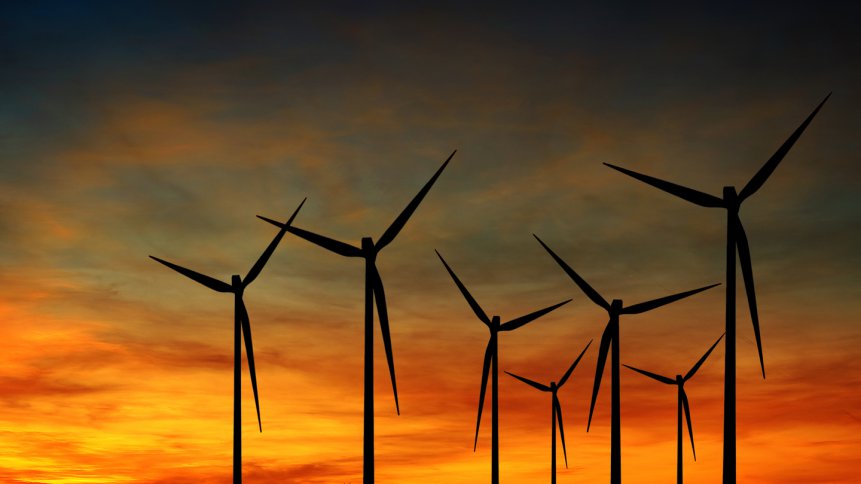Big Tech Vs. Buffet in wind farm gold rush

Wind farms are part of the green panacea that might, eventually, help us break our reliance on fossil fuels and go some way towards saving the planet’s living organisms. But several Big Tech giants are joining forces against a US$4 bn, Warren Buffett-backed renewable energy project in Iowa.
Google, Facebook, and Microsoft Corp. – three of the world’s largest customers for clean power – have warned that the project by MidAmerican Energy (which is owned by Buffett conglomerate, Berkshire Hathaway, Inc.) may not be in the best interests of customers, and asked the company to look at alternative options.
The Biggest Wind Farm In The US
The project, if it goes ahead, would be the largest single complex of wind farms in the continental United States. It could be online and producing power as early as 2024. Estimates claim the MidAmerican project would provide enough power for 700,000 homes.
So, is this just the latest example of Big Tech acting like “The Man,” (as it has recently done over calls for unionization), demanding other solutions be examined when the largest wind farm complex in the US is proposed? Actually, it’s anything but that.
YOU MIGHT LIKE

Technology’s tricky role in the UK’s Zero-Carbon aims
The Texas Wind Farm Accord
Back in 2021, Google and Berkshire Hathaway were in complete accord in Texas, fighting plans in the state legislature to add on extra costs to clean energy projects. Other tech giants including Amazon, and some leading Wall Street names like Goldman Sachs and JP Morgan Chase stood shoulder to shoulder with Google and the Buffett conglomerate in fighting the imposition of “grid services” that keep the power supply flowing in the event of freak weather events.
So, what has caused the discord between Big Tech and Buffett?
The Wind Farm Gold Rush
Rather than any Big Tech revolution away from wind farms and renewable energy, it’s much more likely to be the fact that this single Buffett-backed move would make MidAmerican Energy an enormously powerful single-entity player in the US renewable energy market – and Big Tech companies want to be big players in that market themselves. After all, tech companies are some of the power grid’s biggest users. And so, being a power producer in its own right makes good sense to a company like Google.
In a real sense, renewable energy is one of the slowest, quietest gold rushes in history. Some of the Big Tech players that are opposing the Buffett move have been acquiring wind farm investments for a decade. Back in 2013, Microsoft locked in a 20-year deal for wind farm operations in Texas, to buy wind power from an independent producer in the state to power its data center there. It followed that in 2015 with a deal in Illinois to buy a 175 Mw wind farm facility outside Chicago – enough to power its Chicago data center entirely on renewable energy; again, on a 20-year deal.
Google too has been in the game of either buying up wind farms or doing exclusive deals with wind farm owners to power its data centers since at least 2010. In Texas, it took a US$200 million stake in the Spinning Spur wind farm facility in 2013 – and that was the company’s tenth wind farm investment in three years. More recently, in 2021, Google took an interest in wind farms in Oklahoma, to supply its power-thirsty data center in the state.
Wind Farms and Data Centers – Wagging the Dog
Big Tech is not mobilizing against MidAmerican because it’s against wind farms and renewable energy. It’s just not in favor of a player outside the Big Tech tent suddenly developing a monopoly on that energy in a region where Big Tech companies need it.
There’s an old business saying: if you own a steam-powered railway line, you can either buy coal every week, at the price the mine-owner demands, or you can buy a coal mine once.
The various moves by Big Tech companies to buy up either wind farms themselves, or exclusive deals with wind farm owners based on taking all they can supply to power data centers in the state, are just Big Tech trying to become mine-owners, powering their data centers with local green energy at a fraction of the cost the open market might one day decide to charge them.
The MidAmerican project, if it goes ahead, is an attempt by Berkshire Hathaway, Inc. to establish the largest single wind farm complex, not only in Iowa but in the continental United States. That would interrupt a business strategy among tech giants that has been quietly advancing for a decade.
When you have Buffett-level money, you can afford to be the tail that wags the dog. If the MidAmerican project in Iowa were to go ahead, yes, it would potentially supply energy for up to 700,000 homes. But it would also become the largest supplier of wind power in the state. Not buying from the mine owner in that case would seem like bad business.
The Justifiable Concern
Of course, were the tech giants to pull their data centers out of Iowa, rather than buy from MidAmerican, they would have no guarantee that a similar company would not start up another wind farm wherever they relocated.
Berkshire Hathaway, Inc. has asked state regulators in Iowa to approve terms that include a guaranteed 11.25% rate of return before it even starts construction on the project. It claims that will help it trim carbon emissions from power generation in the state by 75% compared to 2005 levels. So there is some level of justifiable concern from the tech giants over Berkshire Hathaway Inc.’s potential pricing strategy for customers.
But there’s also a quiet, windy, geographically dispersed gold rush playing out beneath the surface. And many of the Big Tech players don’t want to see anyone who isn’t among their number stake the biggest claim.








